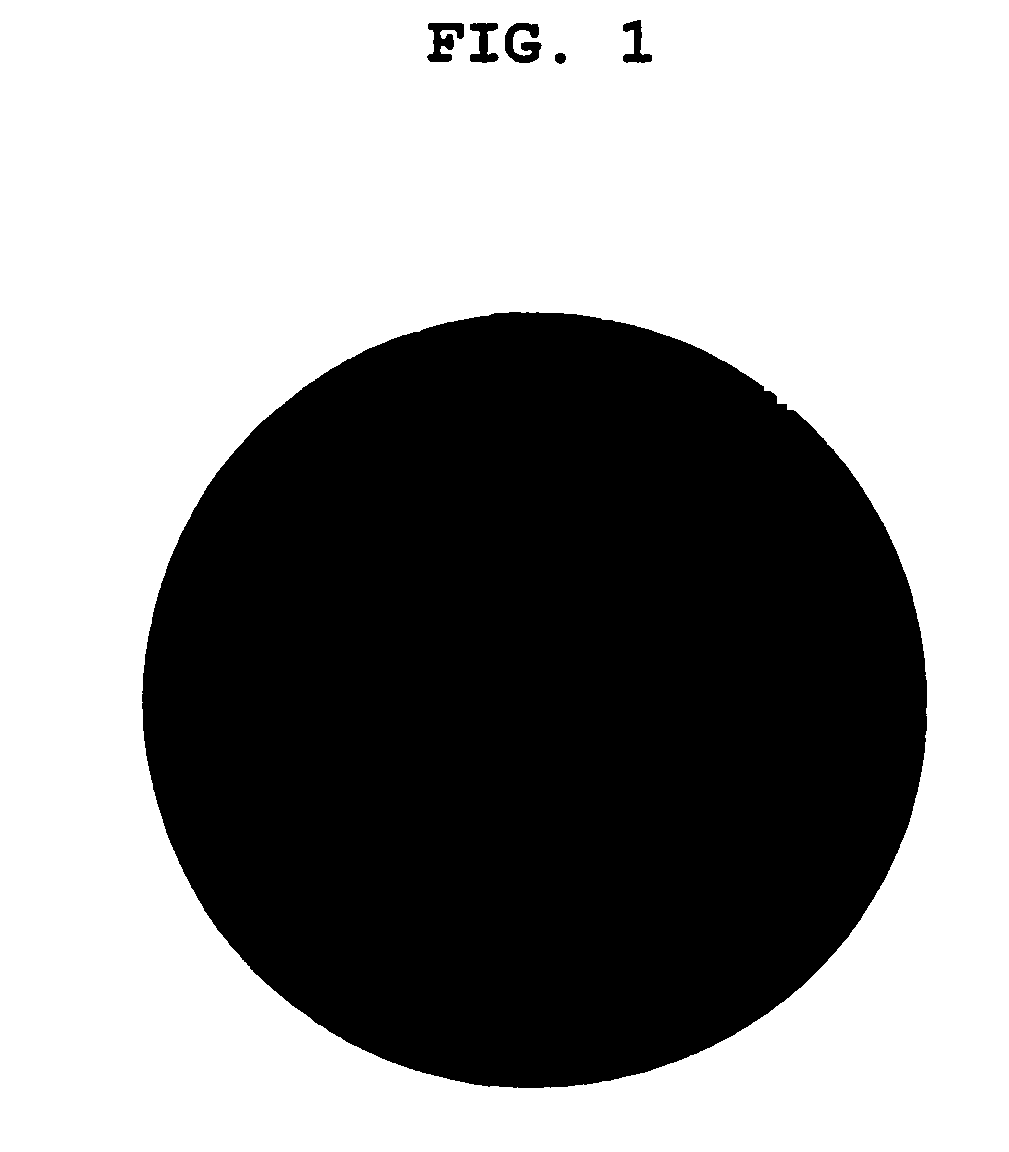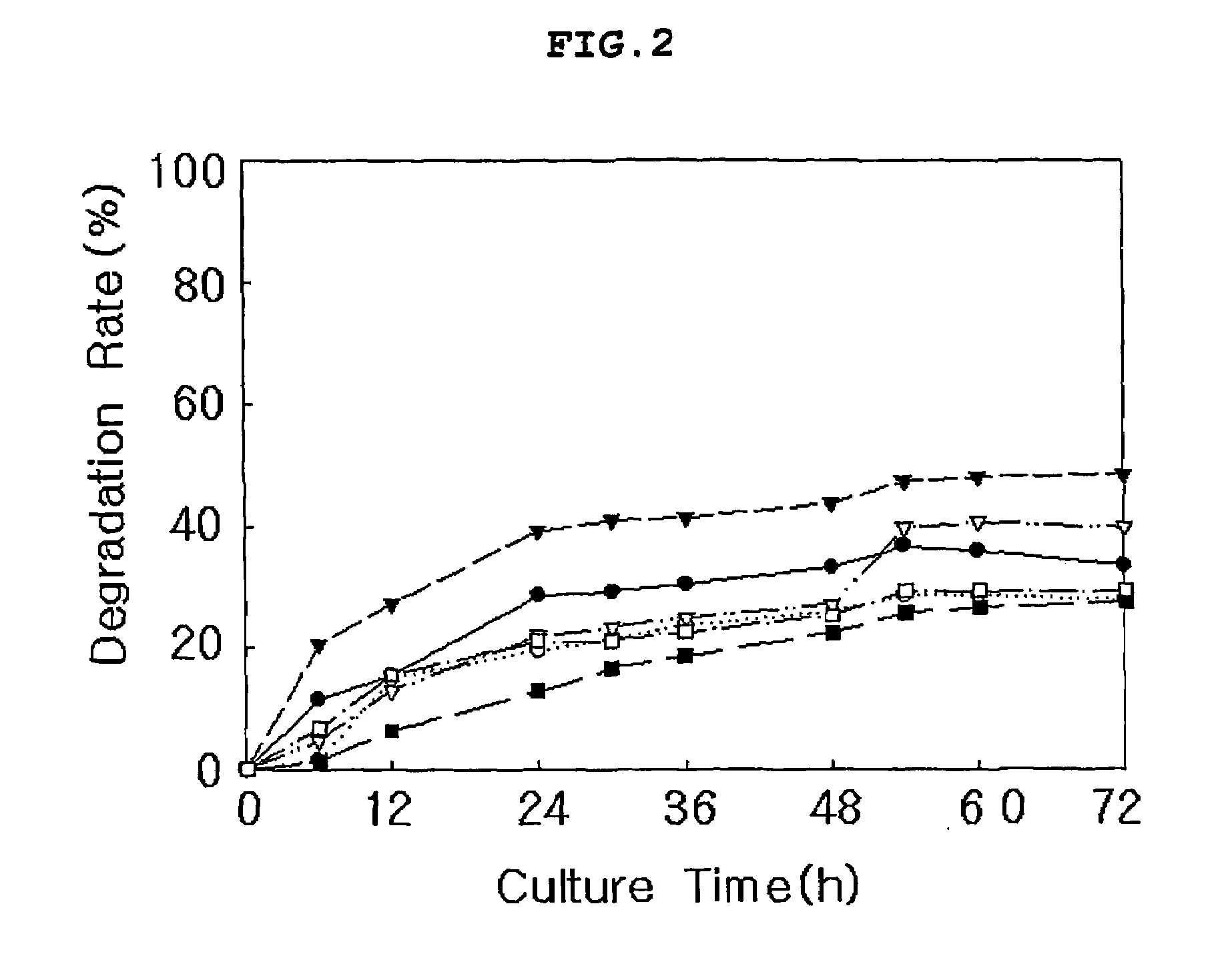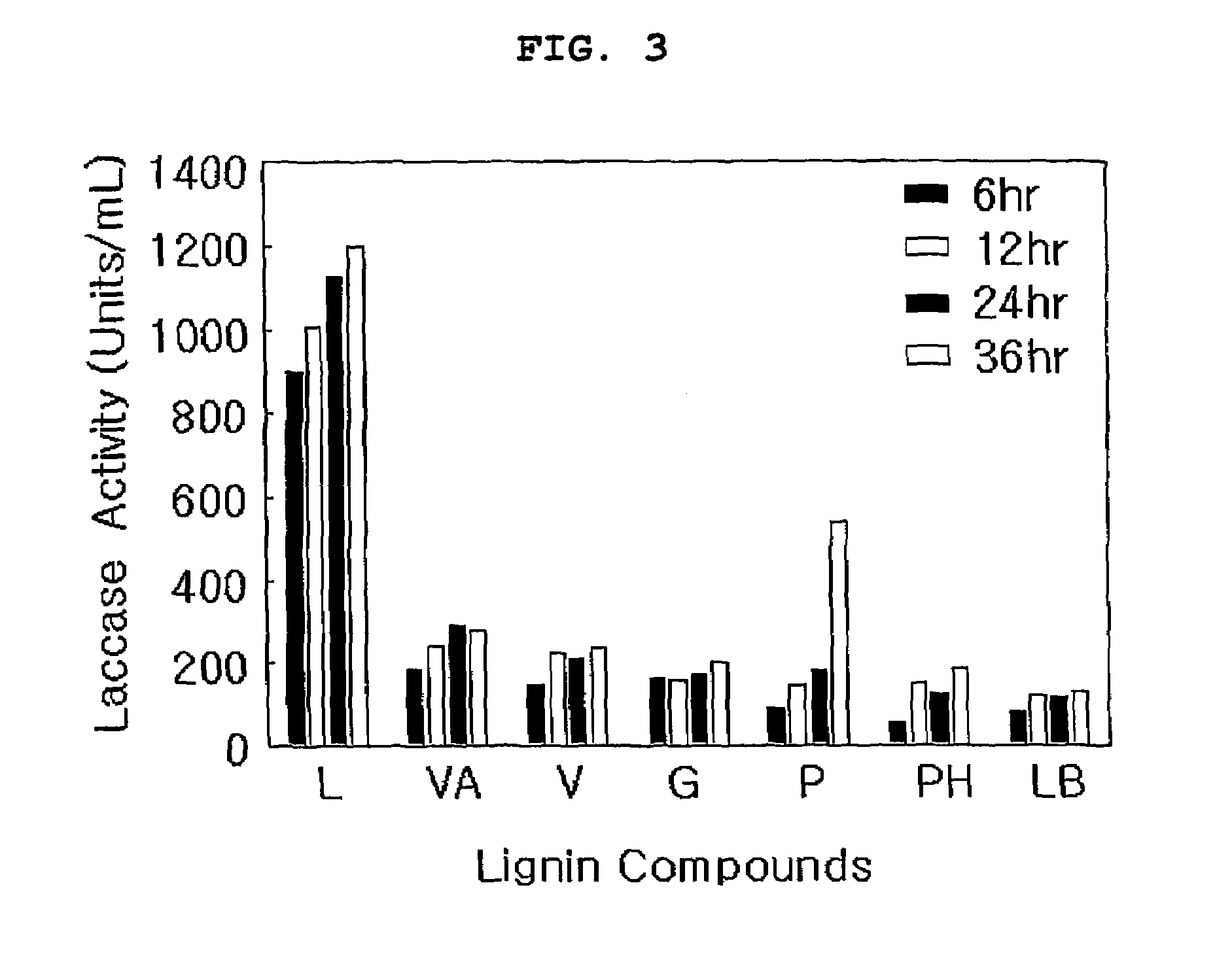Microorganism of serratia family, isolation method and the preparation method of lignin lyases using this
- Summary
- Abstract
- Description
- Claims
- Application Information
AI Technical Summary
Problems solved by technology
Method used
Image
Examples
example 1
and Identification of the Microorganism
Isolation of the Microorganism
[0050]In order to get rid of contaminants on the surface of insect body, the insect like Sympetrum depressiusculm was dipped in 70% (W / W) ethanol for one or two minutes and washed with distilled water twice. From the washed insect body, gut was taken out and put into PBS (phosphate buffered saline, 0.8% NaCl, 0.02% KCl, 0.144% Na2HPO4, 0.024% KH2PO4). Gut in PBS was crushed and extracted. The obtained extract was diluted to 10−5 and cultured in LB medium for 24–48 hours. The cultured microorganism was moved onto solid medium containing lignin and colony activity staining method was performed. The microorganism forming white ring by lignin degradation was selected.
Identification of the Microorganism
[0051]The selected microorganism was analyzed by physiological and biochemical methods.
[0052]As a result, the microorganism of the present invention was confirmed to produce β-galactosidase, β-glucosidase, lysine dicarb...
example 2
ase Production of the Separated Microorganism
[0060]To verify whether the microorganism of the present invention produces lignin lyases, simple plate test (Sundman, V. and L. Nase, Paper och. Tra., 1971, 53, 71–76) was performed. Particularly, the microorganism was cultured for 24–48 hours on solid medium made from basic medium(0.5% glucose, 0.5% NH4-tartrate, 0.1% malt extract, 0.001% CaCl, 0.01% NaCl, 0.001% FeCl3) on which 0.025–0.1% lignosulfonate was added. Thereafter the microorganism grown up on the medium was washed with distilled water and the reagent made by 1% FeCl3 and 1% K3[Fe(CN)6] with the same amount each was treated on agarose medium, resulting that transparent zone was formed around colony of the microorganism(FIG. 1). This method was to observe whether FeCl3 and K3[Fe(CN)6] could response to phenol group of resolved lignin, which finally showed clearly that the microorganism of the present invention produced lignin lyases for the degradation of lignin.
example 3
tivity of Lignin Lyases
[0061]Enzyme activity of laccase was measured by using culture supernatant of the microorganism as coenzyme source. Particularly, supernatant was obtained by centrifugation of the culture fluid with 13,000 rpm for 5 min. at 4° C. Then, the obtained culture supernatant was mixed with 0.1 M of sodium acetate buffer (pH 5.0), and 0.5 mM of ABTS(2,2-azio-bis(3-ethylbenzthiazoline-6-sulfornic acid) was added thereto for inducing enzyme reaction, and finally, the difference of absorbance was measured at 420 nm for 1 minute. The activation unit of enzyme was decided as the amount of enzyme oxidizing 1 μmole of ABTS per minute.
[0062]As a result, it was confirmed that the microorganism of the present invention produced 254 units of laccase when it was cultured for 12 hours on the basic medium, and 300 units when it was cultured for 24 hours.
Enzyme Activity of Lignin Peroxidase
[0063]Enzyme activity of lignin peroxidase was measured by using c...
PUM
| Property | Measurement | Unit |
|---|---|---|
| Fraction | aaaaa | aaaaa |
| Fraction | aaaaa | aaaaa |
| Fraction | aaaaa | aaaaa |
Abstract
Description
Claims
Application Information
 Login to View More
Login to View More - R&D
- Intellectual Property
- Life Sciences
- Materials
- Tech Scout
- Unparalleled Data Quality
- Higher Quality Content
- 60% Fewer Hallucinations
Browse by: Latest US Patents, China's latest patents, Technical Efficacy Thesaurus, Application Domain, Technology Topic, Popular Technical Reports.
© 2025 PatSnap. All rights reserved.Legal|Privacy policy|Modern Slavery Act Transparency Statement|Sitemap|About US| Contact US: help@patsnap.com



